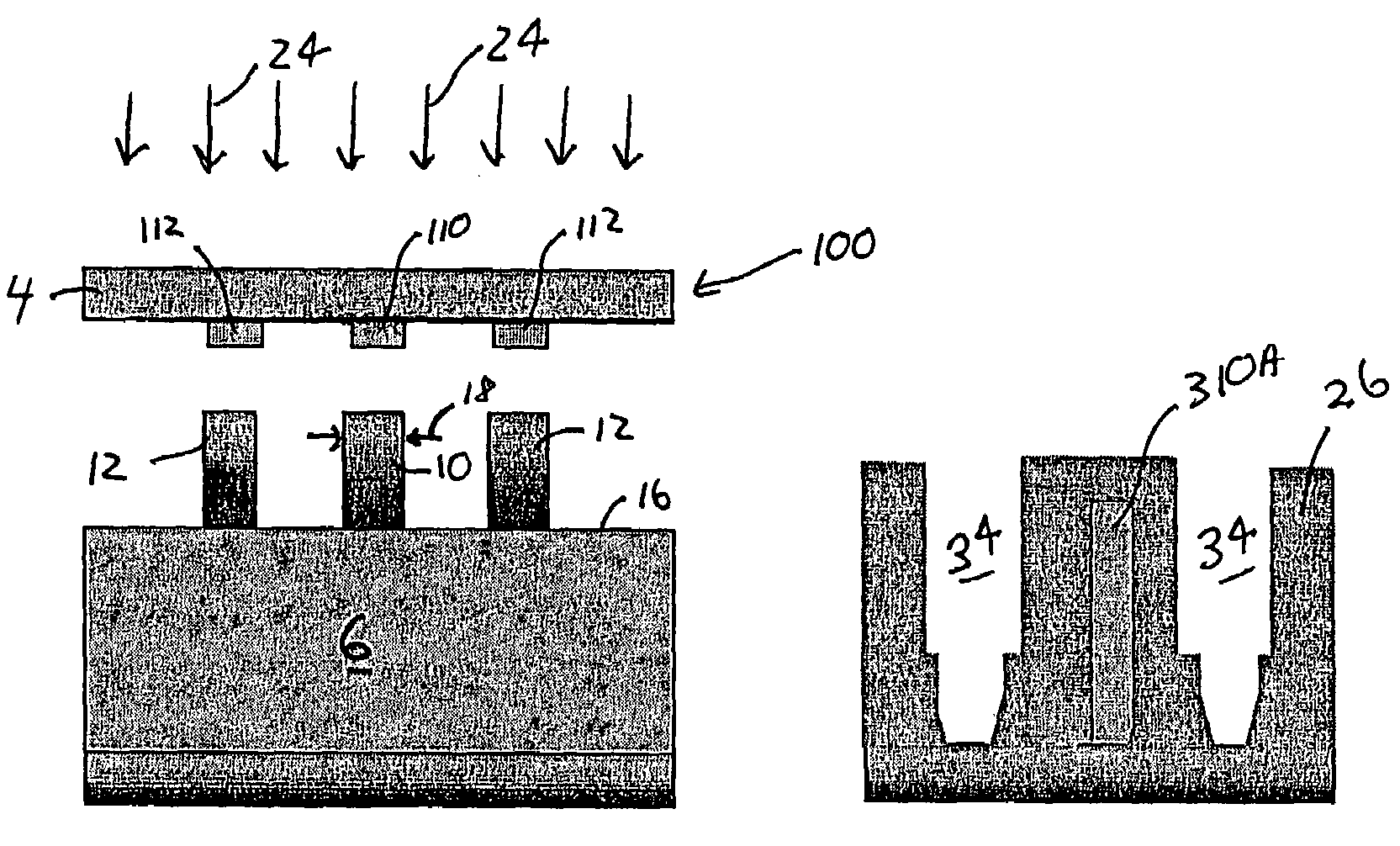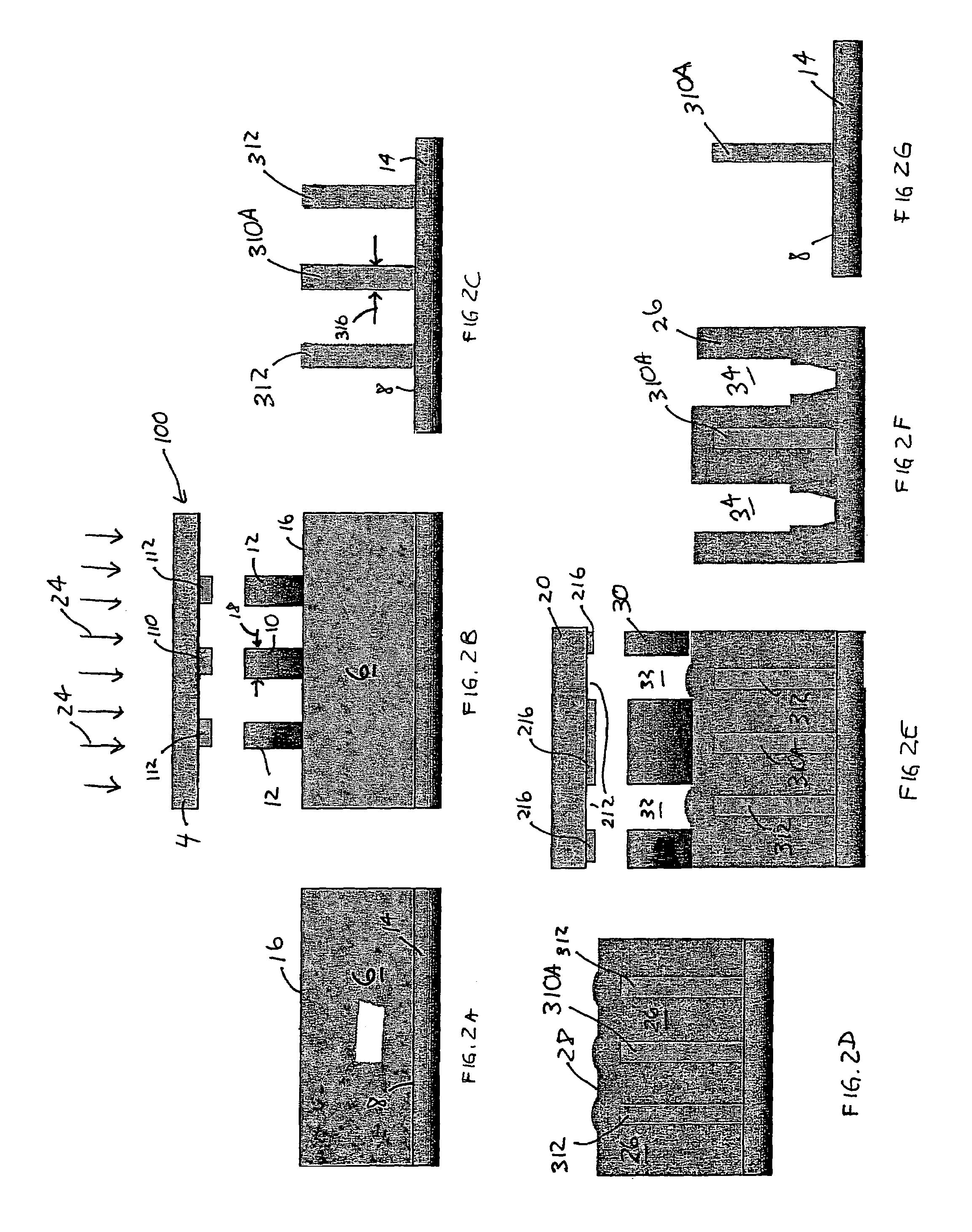Method utilizing compensation features in semiconductor processing
a semiconductor and compensation feature technology, applied in the field of photolithography and etching processes in semiconductor devices, can solve the problems of insufficient elimination of proximity effects, corresponding and undesirable pattern formation in photoresist layers, etc., and achieve the effect of widening the process window and reducing the depth of focus and proximity effects
- Summary
- Abstract
- Description
- Claims
- Application Information
AI Technical Summary
Benefits of technology
Problems solved by technology
Method used
Image
Examples
Embodiment Construction
[0015]The present invention overcomes the limitations of the prior art and provides compensation features such as scattering bars added to a photomask pattern. The compensation features are patterned and etched along with device features, then removed. The compensation features may be used at any of various mask levels and in conjunction with the production of various semiconductor devices. In one embodiment, the compensation features may be scattering bars used in conjunction with an isolated line or an outermost line of an array of lines. The compensation feature is sufficiently wide to improve the depth of focus for isolated or outermost lines of the desired pattern which are situated differently than otherwise similar nested lines. In an another embodiment, the compensation feature may be a line segment connecting two linearly aligned device features. When this exemplary compensation feature is removed, the facing end lines include superior pattern integrity. The method of the p...
PUM
| Property | Measurement | Unit |
|---|---|---|
| width | aaaaa | aaaaa |
| area | aaaaa | aaaaa |
| etch rate | aaaaa | aaaaa |
Abstract
Description
Claims
Application Information
 Login to View More
Login to View More - R&D
- Intellectual Property
- Life Sciences
- Materials
- Tech Scout
- Unparalleled Data Quality
- Higher Quality Content
- 60% Fewer Hallucinations
Browse by: Latest US Patents, China's latest patents, Technical Efficacy Thesaurus, Application Domain, Technology Topic, Popular Technical Reports.
© 2025 PatSnap. All rights reserved.Legal|Privacy policy|Modern Slavery Act Transparency Statement|Sitemap|About US| Contact US: help@patsnap.com



